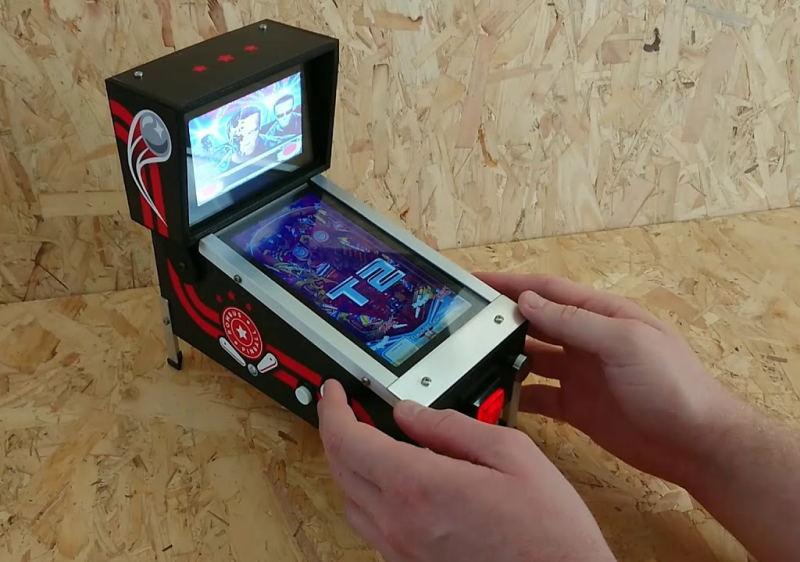We were wondering what [Circuitbeard] has been up to lately. Turns out he’s been building a mini pinball cabinet to add to his arcade of self-built games.
[Circuitbeard] was forced to break out of his Raspi comfort zone this time. We’re glad he did because this is one impressive build. Finding the pinball emulation community lacking for Linux, he turned to the LattePanda, a tiny Windows 10 SBC with a built-in Arduino Leonardo. This was really the perfect board because he needed to support multiple displays with a minimum of fuss. That Leonardo comes in handy for converting button presses to key presses inside the Visual Pinball emulator.
The 3mm laser-cut plywood cabinet was designed entirely in Inkscape and sized around the two screens: a genuine 7″ LattePanda display for the playfield, and a 5″ HDMI for the back glass. The main box holds the Lattepanda, two Pimoroni mini speakers, and a fan to keep the board cool.
There’s a lot to like about this little cabinet thanks to [Circuitbeard]’s fantastic attention to detail, which you can see for yourself in the slew of pictures. Look closer at the coin drop—it’s really an illuminated button with a custom graphic. If you want to have a go at emulating this emulator, all the code is up on GitHub. Tilt past the break to watch some modern pinball wizardry in action, and then check out his mini Outrun machine.
If pinball emulators don’t score any points with you, here’s one that’s all wood and rubber bands.
















I love pinball machines… This is a thing I might need…
nice build, uncommon but powerful board,
Great. I need one!
That thing is soooooo nice!
Soon you’ll be able to have a whole arcade that fits on the head of a pin.
I like the button placement further back. While it doesn’t mirror placement of a full size machine, it does look quite playable. Now I think I’m going to look at what it will take to build one of these for myself.
Looks like it might be fun. What is the price?
Is there an Accelerometer as a tilt sensor ?????
Sadly, that appears to be not the case. At least, I could find any reference to an accelerometer and a tilt sensor in the source code upon first glance. No “nudge” buttons either (which work as a somewhat reasonable approximation in some PC-based emulators/simulators).
For me, a pinball machine (or emulation/simulation) *must* allow for nudging; a machine without that feels incomplete for me. And no, it’s not “cheating” as some would say; it’s an additional way of controlling the ball, which has to be skillfully kept within the limits the tilt sensor imposes.
I made a bigger version of that ;) https://www.youtube.com/watch?v=2C2kNfiSbq8
How much and where to purchase?
Nice build. There’s a group on Facebook that’s been building micro pinballs for a couple of months now too. https://www.facebook.com/groups/foramusementonly/